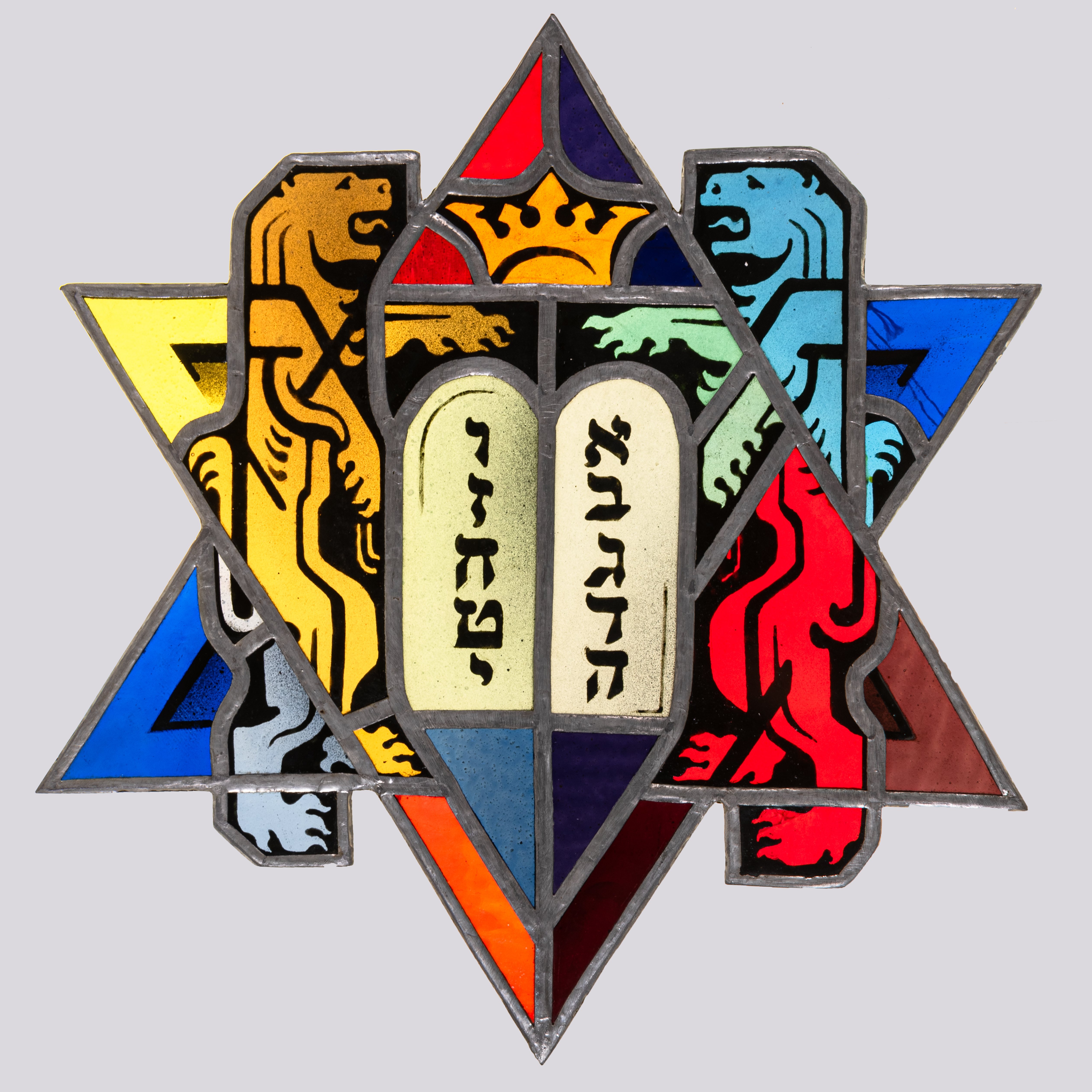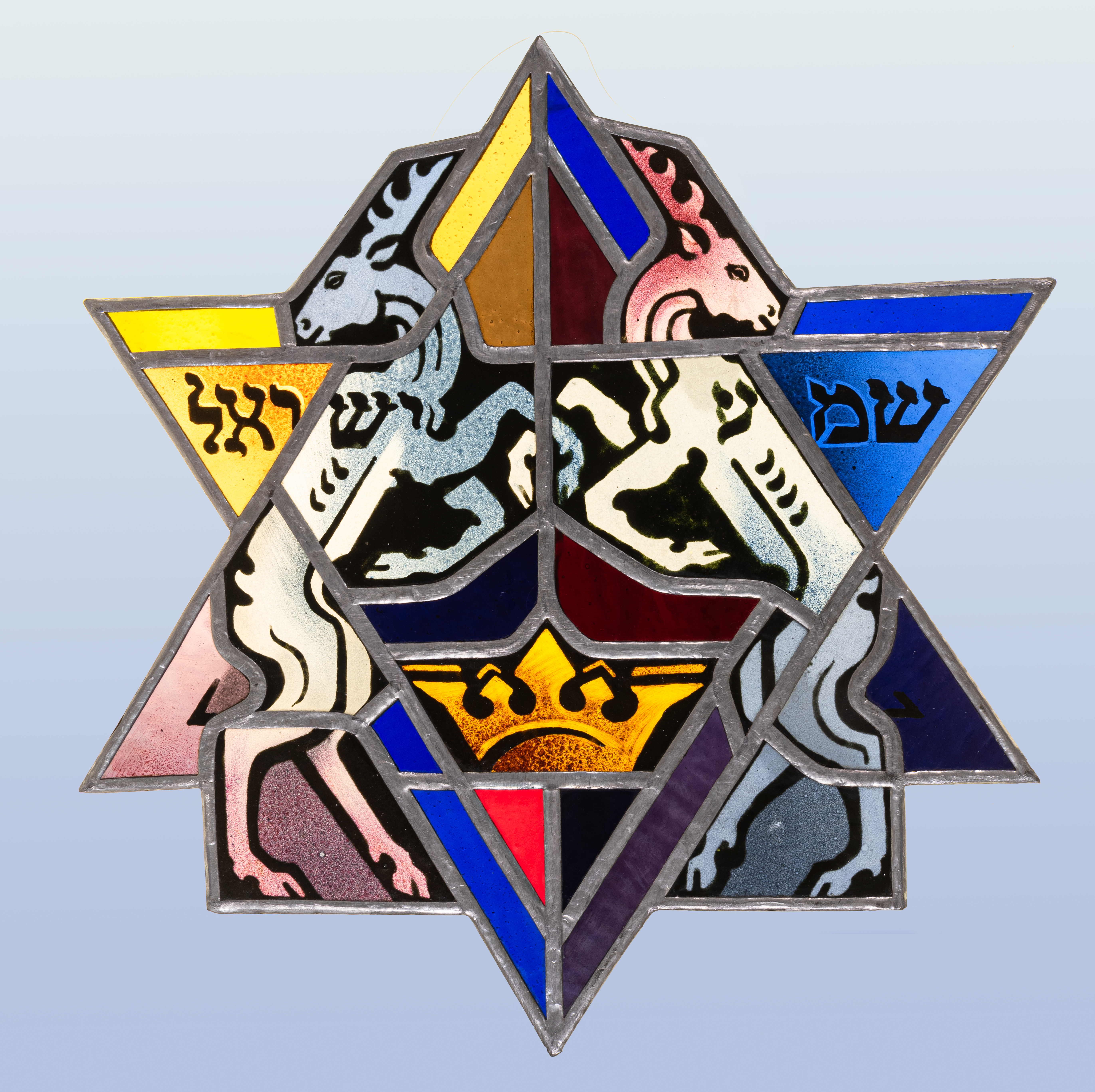Exhibit of the month |
← |
Published: 2024-04-26
Kazimieras Morkūnas, Stars, organic glass, lead, 44.5 x 41.5 cm, Acc. No. VŽM 9002/ 1, 2
Stained glass reveals the magical beauty of glass. The viewer is fascinated by the play of light that is born when the sun illuminates the coloured glass. Although some say that stained glass is intended for the decoration of churches and mansions, it has become a popular component of décor in the interiors of modern buildings.
Stained glass is not uncommon in museum expositions either. The two stained-glass windows created by Kazimieras Morkūnas at the very beginning of the 21st century are the tiny masterpieces in our museum's collection of glass. Both artworks are created using the classic stained-glass technique.
Fragments of coloured thin glass in the shape of hexagonal stars are reinforced with lead seams. One hexagonal star is decorated with deer figures and a crown, and bears an inscription in Hebrew Shma Israel (Hear, O Israel!). The second star is decorated with figures of lions and the Ten Commandments plates, including a crown hovering above them. The colours of the stained-glass windows are rich and full of contrast, and the composition is expressive and whole.

Kazimieras Morkūnas, Stars, organic glass, lead, 44.5 x 41.5 cm, Acc. No. VŽM 9002/ 1
Kazys Morkūnas (1925—2014), a Lithuanian stained-glass artist, graduated from the Lithuanian Art Institute in 1952. As of 1953, he was a lecturer at the Lithuanian Art Institute, and from 1977 to 1993 was head of the Institute’s Drawing Department. From 1953 onwards, Morkūnas took part in exhibitions in Lithuania and abroad.
In 1953, he was one of the first in Lithuania to create an experimental stained-glass window consisting of several layers of fused thin glass. The early stained-glass windows by Morkūnas are dominated by realistic ornamental drawings (Jūratė and Kastytis, 1956) and decorative style (The Muse, 1956; The Girl, 1960). Since the 1960s, the artist mostly used blocks of stained glass cemented together with concrete to create his art (Pirčiupis, 1962).
During the same period, Morkūnas exhibited his artwork in Canada and Japan, where he created several pieces of stained-glass art that was displayed at the world exhibitions in Montreal (1967) and Osaka (1970). In the 1970s, the artist created the stained-glass windows for the Kryžkalnis Memorial (and in 1973 was awarded the National Prize of the LSSR) and the stained-glass windows for the memorial of the IX Fort Museum in Kaunas (for which he was awarded the National Prise of the USSR in 1985). Both of the artworks were made of thick block glass.
In 1981, the artist created one of the largest (180 m2) pieces of stained-glass artwork in Lithuania titled The Celebration, which adorns the First Wing of the Parliament of the Republic of Lithuania. In 2005, Morkūnas created spatial stained-glass windows for a school in Punsk, and in 2008 — for the Church of the Providence of God in Utena. In 2011, his stained-glass piece The Battle of Žalgiris (Part I) dedicated to the 600th anniversary of the battle was unveiled in the Second Wing of the Parliament building. Grand Duke Vytautas the Great was immortalized there.
Prepared by the curator of the Museum's Art Collections Irina Nikitina
© Photograph courtesy of Paulius Račiūnas
© From the collection of VGMJH

Kazimieras Morkūnas, Stars, organic glass, lead, 44.5 x 41.5 cm, Acc. No. VŽM 9002/ 2
| ↑ | ← |
